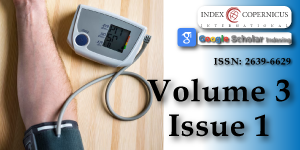Validation of the Omron HBP-9031C blood pressure monitor for clinics and hospitals according to the ANSI/AAMI/ISO 81060-2:2013 protocol
Main Article Content
Abstract
Objective: The present study aimed to evaluate the accuracy of the Omron HBP-9031C automated oscillometric upper-arm blood pressure (BP) measurement device for blood pressure monitoring, according to the ANSI/AAMI/ISO 81060-2:2013 protocol (ANSI/AAMI/ISO).
Participants and Method: The device evaluations were performed in 85 participants, who fulfilled the inclusion criteria of the protocol. The validation procedure and data analysis followed the protocol precisely.
Results: In the ANSI/AAMI/ISO 81060-2-2013 validation procedure (criterion 1), the mean ± SD of the differences between the test device and reference BP was 0.5 ± 7.84/-1.9 ± 6.30 mmHg (systolic/diastolic). The mean differences between the two observers and the Omron HBP-9031C were 0.5 ± 6.69 mmHg (range, −18 to 15 mmHg) for systolic BP and -1.9 ± 5.63 mmHg (range, −17 to 14 mmHg) for diastolic BP, according to criterion 2. The two criteria of the ANSI/AAMI/ISO were fulfilled.
Conclusion: The professional OMRON BP monitor, HBP-9031C fulfilled the requirements of the ANSI/AAMI/ISO validation standard and can be recommended for clinical use.
Article Details
Copyright (c) 2019 Saito K, et al.

This work is licensed under a Creative Commons Attribution 4.0 International License.
Ikeda N, Inoue M, Iso H, Ikeda S, Satoh T, et al. Adult mortality attributable to preventable risk factors for non-communicable diseases and injuries in Japan: a comparative risk assessment. PLoS Med. 2012; 9: e1001160. PubMed: https://www.ncbi.nlm.nih.gov/pubmed/22291576
Zhang Y, Agnoletti D, Blacher J, Safar ME. Blood pressure variability in relation to autonomic nervous system dysregulation: the X-CELLENT study. Hypertens Res. 2012; 35: 399-403. PubMed: https://www.ncbi.nlm.nih.gov/pubmed/22129516
O'Brien E, Dolan E, Stergiou GS. Achieving reliable blood pressure measurements in clinical practice: It's time to meet the challenge. J Clin Hypertens (Greenwich). 2018; 20: 1084-1088. PubMed: https://www.ncbi.nlm.nih.gov/pubmed/30003700
SPRINT Research Group, Wright JT Jr, Williamson JD, Whelton PK, Snyder JK, et al. A Randomized Trial of Intensive versus Standard Blood-Pressure Control. N Engl J Med. 2015; 373: 2103-2116.
Roerecke M, Kaczorowski J, Myers MG. Comparing Automated Office Blood Pressure Readings with Other Methods of Blood Pressure Measurement for Identifying Patients With Possible Hypertension: A Systematic Review and Meta-analysis. JAMA Intern Med. 2019; 179: 351-362. PubMed: https://www.ncbi.nlm.nih.gov/pubmed/30715088
Association for the Advancement of Medical Instrumentation American National Standard. ANSI/AAMI/ISO 81060-2:2013 Non-invasive Sphygmomanometers - Part 2: Clinical investigation of automated measurement type. 2019.
Stergiou GS, Alpert B, Mieke S, Asmar R, Atkins N, et al. A universal standard for the validation of blood pressure measuring devices: Association for the Advancement of Medical Instrumentation/European Society of Hypertension/International Organization for Standardization (AAMI/ESH/ISO) Collaboration Statement. J Hypertens. 2018; 36: 472-478. PubMed: https://www.ncbi.nlm.nih.gov/pubmed/29384983

